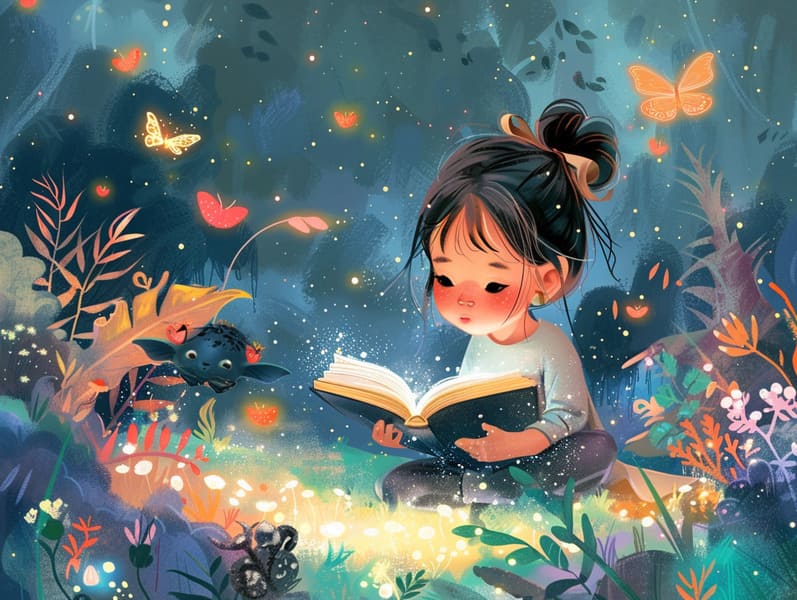The Creation of Fairy Tales to Read and the Endless Wonder.
The Creation of Fairy Tales to Read and the Endless Wonder.
Blog Article

Famous fairy tales have legendary status. These narratives have been whispered from one generation to the next ages before they were ever recorded. They arose from a variety of societies, including Indigenous traditions. They were initially told among mature audiences, often carrying themes and messages relevant to the societal norms and beliefs of the time.
The Grimm brothers, Jacob and Wilhelm, were among the first to compile and publish many of these beloved tales. Their volume, "Grimm's Fairy Tales," included tales like "Cinderella," "The Bread Crumb Trail," and "Snow-White and Rose-Red," which have since become cornerstones in the world of beloved fairy tales. Similarly, Hans Christian Andersen's imaginative fairy tales, such as "The Mermaid's Tale," and "The Duckling that Could," have stolen hearts worldwide, ensuring their place in the pantheon of iconic fairy tales.
Despite their ancient origins, these stories remain as applicable as ever, especially as nighttime stories for kids. These charming stories are now available in various formats, including colorful picture books, magical animations, and web-based fairy tales.
Their persistent charm can be linked to several delightful features:
Significant Morals: Ancient fairy tales often offer important moral lessons. Stories like "The Tale of the Boy Who Cried Wolf" teach the significance of sincerity, while "The Hare and the Tortoise" point out the qualities of resolve and humbleness. These stories offer children clear distinctions between right and wrong, shaping their moral compass in a subtle yet lasting way.
Sympathy and Perception: Ancient fairy tales frequently showcase individuals facing problems and hurdles, inciting kids to relate with their struggles and back their triumphs. For instance, "Beauty and Her Beast" highlights the value of looking past the exterior to understand the true character of a person, nurturing perception and awareness.
Cultural Recognition: Many traditional fairy tales are infused with the cultural contexts from which they came. Reading these stories can provide enlightening views into different social structures, developing a sense of international awareness and awareness.
Imagination and Innovation: The supernatural elements in fairy tales—magical kingdoms—fuel children’s creative minds. These tales bring readers to fantastical realms, engendering fantasy dreams and a sense of mystery that persists a lifetime.
Timeless fairy tales are not only entrancing but also teaching. They serve as check it out fascinating tools in nurturing various thinking and feeling skills in the young. When traditional fairy tales are voiced, they improve language acquisition by offering new words and complex sentence structures. This practice also develops listening abilities and attention, as children hang on every word, anxious to see what happens next.
Furthermore, contemplating the themes and characters of old fairy tales can promote analytical skills and cognitive skills. Young readers are taught to find patterns, anticipate outcomes, and figure out cause and effect. These talks also encourage young readers speak out their thoughts and feelings, strengthening their emotional intelligence.
In today’s high-tech era, the availability of online fairy tales has made these stories more reachable than ever. Online platforms and digital apps extend broad selections of bedtime fairy tales that can be seen or listened via anytime, anywhere. Fairy tales told out loud are particularly sought after, featuring an immersive method for little ones to appreciate these spellbinding stories. Read-aloud stories and read-out-loud stories move characters and settings to life, often augmented by charming harmonies and instrumentals that boost the story journey.
The everlasting appeal of traditional fairy tales lies in their ability to alter to the present while sustaining their basic principles. Contemporary versions of these fairy tales often introduce more multicultural characters and modern settings, making them relevant to today’s audience. However, the central morals of fearlessness, understanding, and fair-mindedness remain unchanged, continuing to resonate with young readers of all ages.
Traditional fairy tales also offer a sense of assurance and knowability. They bequeath a systematic narrative with a clear beginning, middle, and end, often ending with the ending of conflicts and the triumph of good over evil. This steadiness can be placating for the young, extending a sense of stability in an ever-changing world.
Classic fairy tales continue to entrance and guide new generations, maintaining their radiance and impact in modern society. As children's night stories, they supply a perfect blend of charm and enlightenment, nurturing moral values, empathy, and creativity. The proliferation of online fairy tales and the commonness of fairy tales read out loud assure that these timeless stories remain accessible to new generations.
By keeping and narrating these narratives, we continue to value the rich tapestry of lore and cultural heritage. Whether you are experiencing a colorful picture book, enjoying a digital collection, or playing an spoken story, the spell of popular fairy tales is always within reach. These tales teach us of the timeless impact of narratives and its ability to bond us across centuries and lands.
Even if you are enjoying a vibrantly illustrated book, delving into a online collection, or listening via an read-aloud story, the grace of Grimm's fairy tales is always within reach.
These fairy tales reveal of the everlasting spell of fairy tales and its ability to link us across eras and regions, casting a charm that captivates and teaches alike.